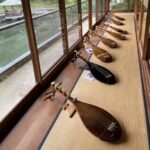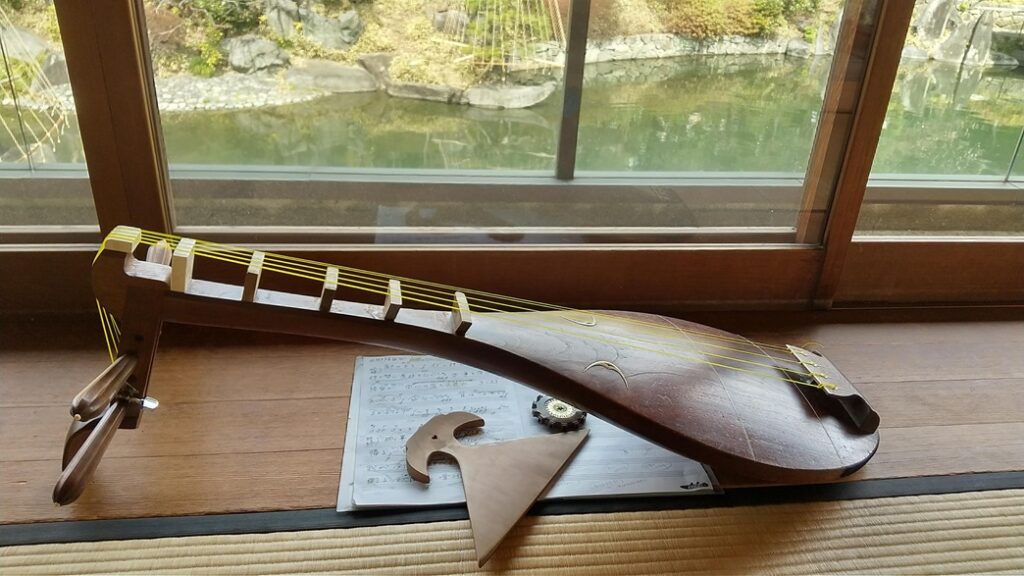There are various types of biwa, a traditional Japanese musical instrument, such as Satsuma biwa and Chikuzen biwa. Satsuma biwa, in particular, has attracted attention for its unique sound and historical background. Satsuma biwa has a wide range of attractions, from its characteristics and playing techniques to the strings it uses and the famous music it produces. By exploring the uniqueness of Satsumabiwa within the biwa family, you will gain a deeper understanding of Japanese musical culture and history. For those who are interested in the different types of biwa, knowledge of Satsuma biwa will surely open up a new world. Biwa lovers, music lovers, and recently, game and animation fans may also rediscover the charm of the biwa from a different perspective by experiencing the charm of Satsuma-biwa. To get a glimpse of the depth of the biwa, why not explore it with a focus on Satsuma biwa?
Let’s learn about Satsuma biwa
Characteristics of Satsuma Biwa
There are several types of biwa. Compared to Gagaku biwa and Chikuzen biwa, Satsuma biwa, which is played with more power and intensity, has historically been widely played in the satsuma region as a way to raise the spirits of warriors and as a votive offering. The sound of the biwa is extremely beautiful, and its unique sound and unique playing techniques, such as strongly striking the plectrum surface, are very attractive.Satsuma biwa occupies an important place in Japanese musical culture.
The charm of Satsuma biwa and how to play it
The charm of Satsuma biwa lies in its unique sound and historical value. The way it is played is also unique, and playing the biwa requires a technique different from that of other instruments. The satsuma-biwa is basically “singing a story while playing,” and the player is required to utilize not only the music but also the characteristics of the biwa when playing it. Therefore, it is an instrument that presents many difficulties even for experienced players.
Name of each part of the instrument, Satsuma-biwa
-⑤-月-⑥-撥面-⑦-覆手(ふくじゅ).jpg)

As shown in the photo above, please remember
(1) Ebio,
(2) Itomaki,
(3) Hashira,or Koma
(4) strings,
(5) Tsuki,
(6) Haraita,
(7) Bachimen,
and (8) Fukujyu (^^♪)
The strings of the satsuma-biwa are one of the elements that play an important role in the performance. Like the shamisen, the strings of the satsuma-biwa are long and thin, producing a distinctive tone. The fourth and fifth strings are very thin and can be easily broken, depending on humidity and other conditions during storage. Care should be taken in storage, and replacement strings should always be available.
Satsuma biwa plectrums are also made from a variety of woods.
It is said that the best material for this large plectrum is made of boxwood.

Masterpieces of Satsuma Biwa
Satsuma biwa has numerous masterpieces, many of which are brilliant in the history of Japanese music. The masterpieces of Satsuma biwa range from classics such as the Tale of the Heike to modern works from a wide range of periods, each with its own unique charm.
Some of the pieces of the Tsuruta-ryu of Satsuma biwa
- Horaisan (from which Kimigayo was taken)
- Gion Syoujya (the beginning of “The Tale of the Heike”)
- Dannoura (depicts the final boat battle between the Genpei and Taira clans, leading up to the Emperor Antoku’s entry into the water)
- Shiroyama (depicts Saigo Takamori)
- Ota Dokan (an anecdote from the “Legend of Yamabuki”)
- Snow clearing (“Chushingura,” the Ako Incident)
- Spring Party (“The Tale of Genji”, a passage from the Butterfly Scroll)
- Kawanakajima (the battle between Shingen Takeda and Kenshin Uesugi)
- Honnoji Temple (“Honnoji no Hen”, the last days of Oda Nobunaga)
- Atsumori (Atsumori was killed by Naozane Kumagai)
- Hagoromo (The legend of Hagoromo, a piece of music also performed in Noh and Kabuki)
There are also many pieces that preserve tradition while incorporating new expressions, and there is also the pleasure of choosing the theme you want to perform, whether it be heroic or sad.

